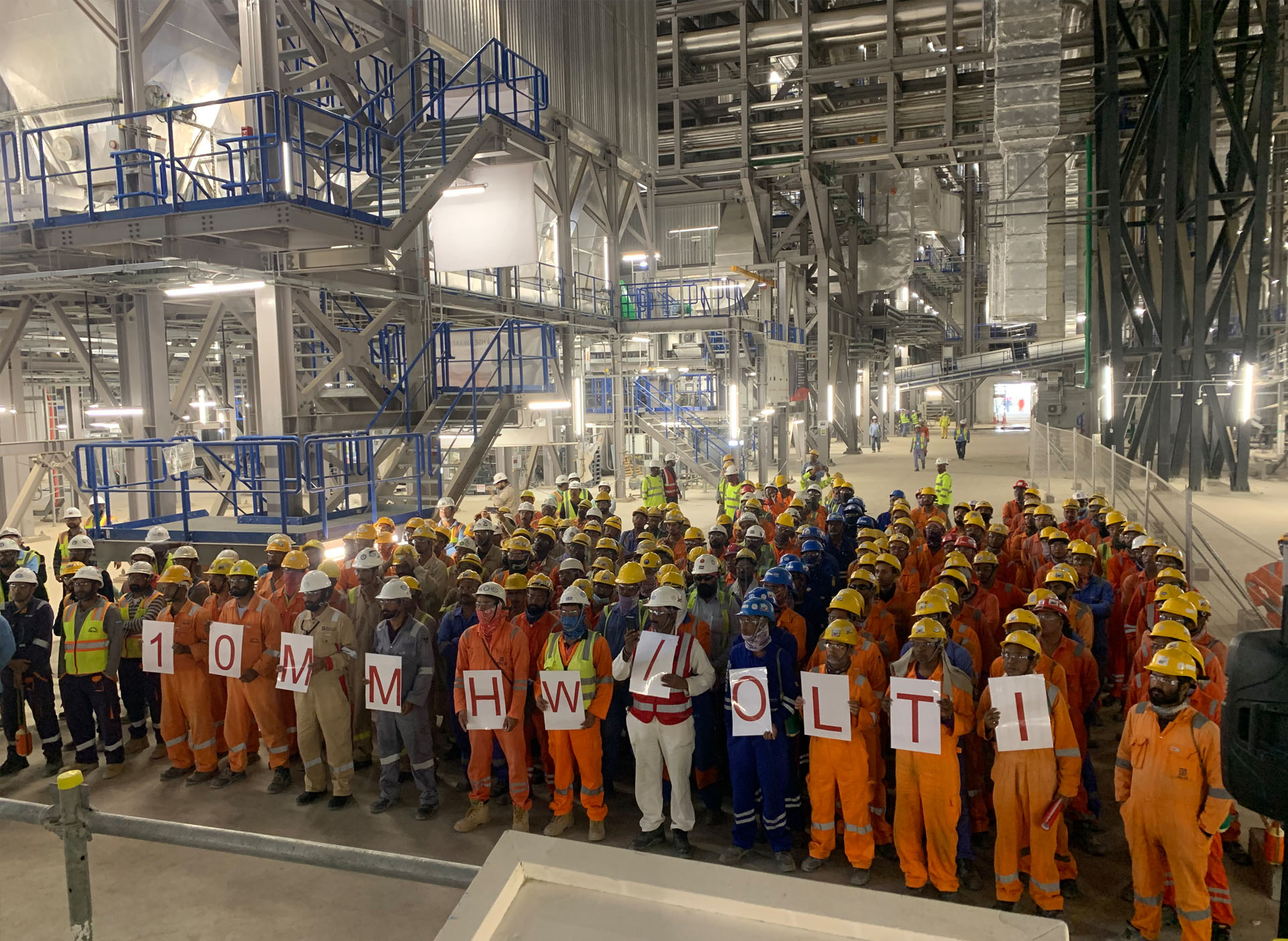
Ten Million Man-Hours without a Lost Time Injury: World’s Biggest Waste to Energy Project Also Sets the Standard in Terms of Workplace Safety
During the commissioning of the Waste to Energy plant in Dubai, Hitachi Zosen Inova has reached another remarkable milestone: 10 million man-hours with no lost-time accidents.
In 2020, joint venture partners Hitachi Zosen Inova (Zurich, Switzerland) and BESIX (Brussels, Belgium) began construction of the world’s largest Waste to Energy plant. The plant sets new technical standards: after completion, it will recycle 5,666 tonnes of waste per day or 2 million tonnes per year. The HZI project team has now also reached a significant milestone in relation to occupational safety.
Dubai, United Arab Emirates: Lost-time injury (LTI), one of the most important metrics in terms of health, safety & environment (HSE), refers to the number of days worked on a project construction site without time lost due to accidents. The 10 million accident-free hours now notched up at the construction site in Dubai is a remarkable milestone. More than 2,700 workers have been employed by HZI here during the main construction phases. The impressive figure has been possible thanks to the strictly defined HSE culture maintained and put into practice by all the partners operating on the construction site. This has created a safe working environment for everyone involved, whose special efforts and performance were recognised with a ceremony and gift for the staff.
The Dubai Waste to Energy project is currently in the hot commissioning phase for unit 1, where the first and second incineration lines are fired to supply electricity to the grid. This will be followed by unit two and the remaining three incineration lines. All five lines of the plant are scheduled to be up and running by end of the year and in full commercial operation by July 2024.
Download Press Release
Download Image « Ten Million Man-Hours without a Lost Time Injury »

